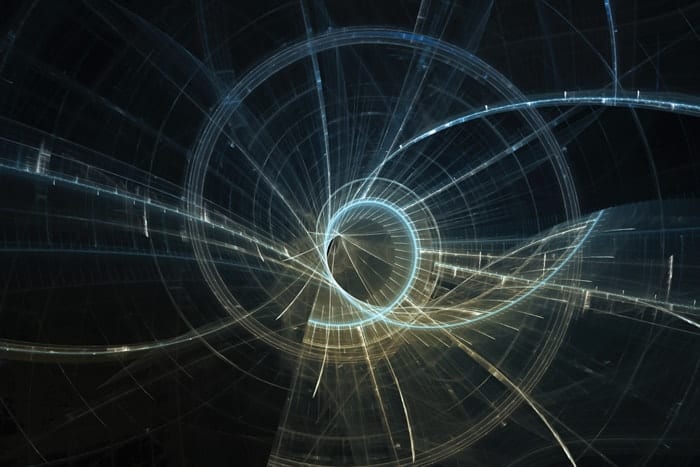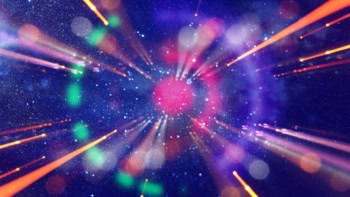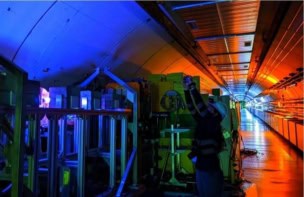
The first detection of gravitational waves in 2015 created huge excitement because it confirmed a long-standing prediction of Albert Einstein’s general theory of relativity and opened up a completely new way of observing the universe. Physicists have also been scrutinizing data from the growing number of gravitational-wave detections for “echoes” – the existence of which could mean that our understanding of relativity is incomplete. Physicists in Canada and Iran have found tentative evidence for such echoes gravitational waves from colliding black holes, and now say a stronger signal exists in data from colliding neutron stars.
Many physicists believe that general relativity is incomplete because it is at odds with quantum mechanics, leading to the information paradox when considering the extreme gravitational fields generated by black holes. Relativity tells us that whenever anything, including light, crosses a black hole’s event horizon the information it contains is lost to the rest of the universe forever. But quantum mechanics requires that information can neither be created nor destroyed. This is a problem given the existence of Hawking radiation, which implies that black holes can evaporate away to nothing and in the process erase all of the information that flowed into them.
If gravitational-wave echoes exist, it would suggest that black holes are not bounded by a classical event horizon but instead by a quantum-mechanical Planck-scale structure. One such structure put forward by theorists is the “firewall”, which would destroy any object passing through it but retain that object’s information and so keep it outside the black hole. Firewalls, however, are controversial. While physicists generally agree that quantum mechanics comes into play deep inside black holes – even though it is impossible to see its effects – they are largely sceptical about its role outside the event horizon.
Barrier bouncing
Gravitational-wave echoes would be created thanks to the presence of the Planck-scale structure, or “membrane”, and what is known as the angular momentum barrier. The latter is a boundary lying around 1.5 times as far as the event horizon (typically around 200 km from the centre of a black hole) that is predicted by relativity and which partially confines gravitational waves. Any outgoing wave generated between the event horizon and the barrier would normally bounce off the barrier and then pass through the horizon, never to be seen again. But the membrane, lying within a Planck length of the horizon, would instead reflect the wave back, allowing it to either bounce off the barrier again or, less likely, pass through the barrier into space.
As a result, the barrier can act like semi-reflective mirror that releases a small fraction of the gravitational-wave energy into space after each reflection from the membrane. This would appear as weak bursts of gravitational radiation – the echoes – separated by a well-defined time interval that depends only on the black hole’s mass and rate of spin.
This proposal is based on an idea originally put forward by Vitor Cardoso of the University of Lisbon in Portugal and colleagues in February 2016, just a couple of weeks after the LIGO collaboration in the US had announced the first detection of gravitational waves. Then in December that year, Niayesh Afshordi of the University of Waterloo and the Perimeter Institute for Theoretical Physics in Canada and colleagues said they had evidence to back up the idea, claiming to have found a 2.5σ signal for the echoes in gravitational waves from three pairs of merging black holes, including that seen in the first detection.
Consistent with noise?
That claim was met by scepticism from nine members of the LIGO collaboration, who did their own analysis of the data. They included more background than considered by Afshordi’s team and colleagues, and found a signal, but with less significance – about 2σ. The result, said the LIGO team, was “entirely consistent with noise”. They therefore concluded that the rival analysis did “not provide any observational evidence for the existence of Planck-scale structure at black hole horizons”.
Undeterred, Afshordi and his colleague Jahed Abedi of the Sharif University of Technology in Tehran looked for echoes in data from the merging neutron stars announced with much fanfare by LIGO and Virgo in Italy in October 2017. First, they calculated the range of expected echo frequencies and time delays between merger and echoing – 60-90 Hz and up to 1 s, respectively (the latter depending on whether the neutron stars collapsed directly to form a black hole or first produced a very massive neutron star). They then scanned the data set to find out whether there were waves matching those criteria. As they reported recently on the arXiv server, they did indeed find such a signal – at 72 Hz, around 1 s after the merger. What’s more, they found only a few similar repeating patterns at other times within the data. As such, they claim, the signal has a significance of 4.2σ.

Can we unify quantum mechanics and gravity?
Cardoso says it is “puzzling” that the neutron-star echoes should have a higher significance than those from the merging black holes – given that the latter signal was more intense. He also cautions that the repeating waves could be a consequence of conventional physics, such as “radiation from leftovers of the merger”. Nevertheless, he argues that the prospect of new physics makes such searches worthwhile. “It would be foolish not to dig deep into this,” he says.
Afshordi admits he was surprised to find such a strong signal in the neutron star data, and acknowledges that fresh observations from LIGO and Virgo will be needed to settle the issue. But he argues that the evidence is building, pointing out that another group, at the University of Toronto, has seen 3σ evidence for the echoes. “So far everyone who has looked for echoes has found them, including the LIGO group,” he maintains. “We have yet to have a group that doesn’t find anything.”



